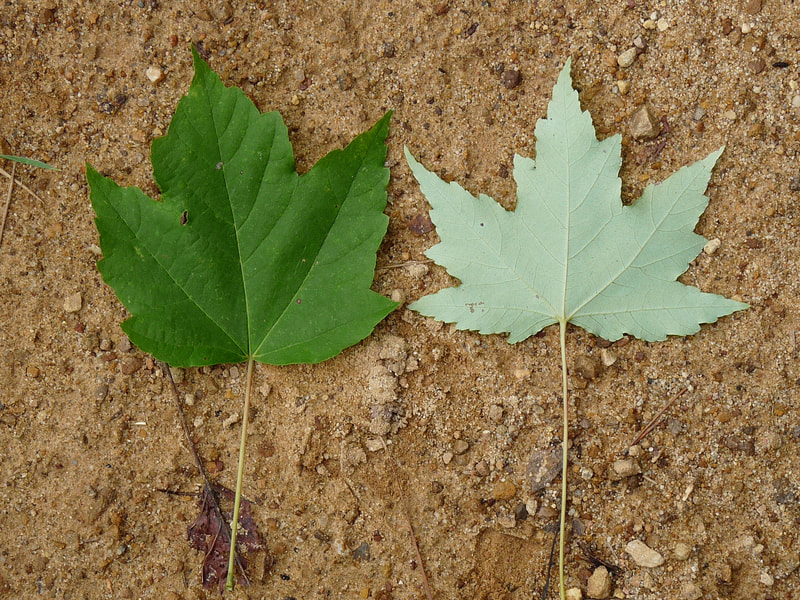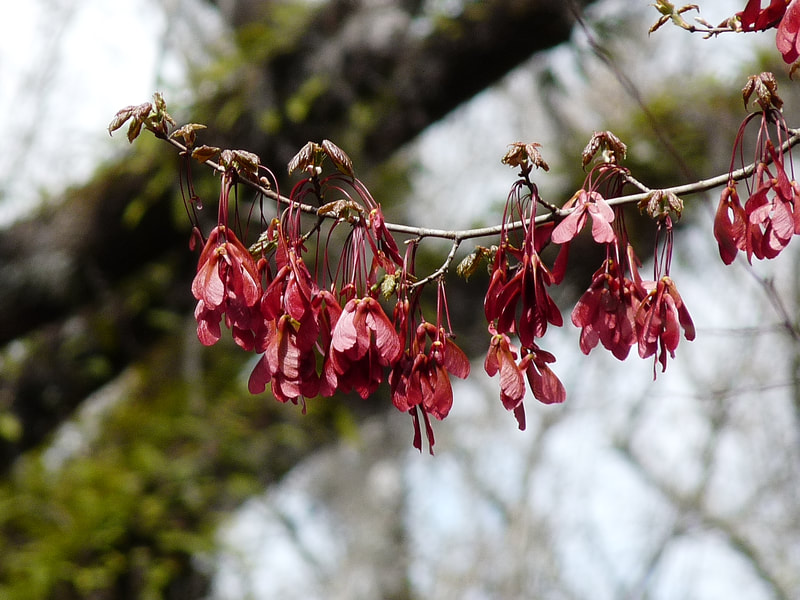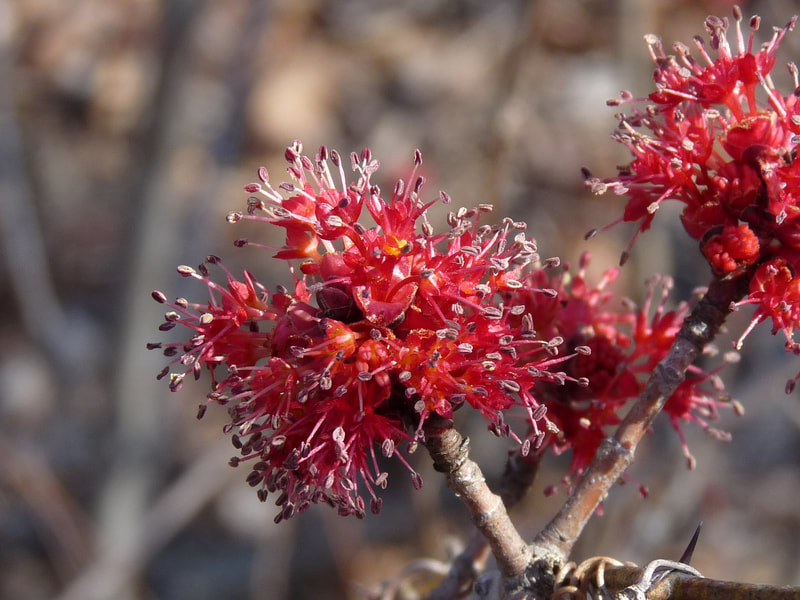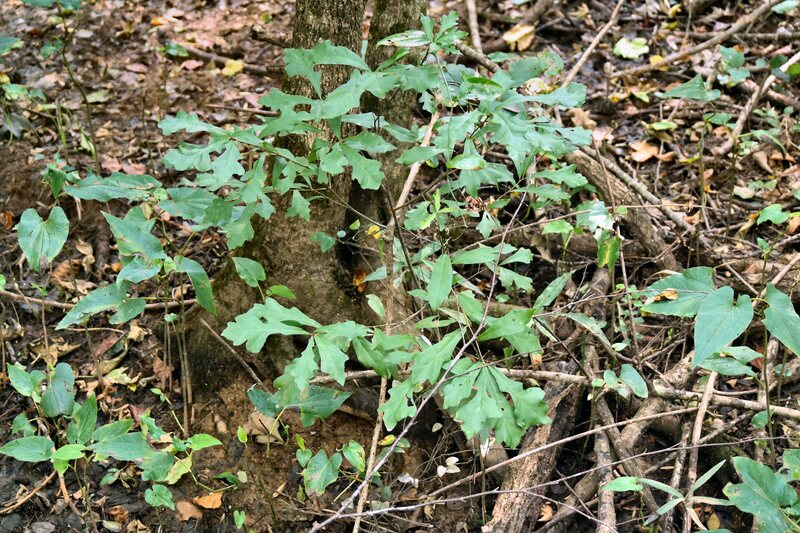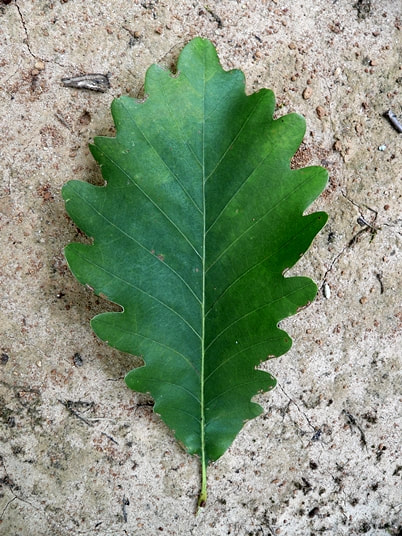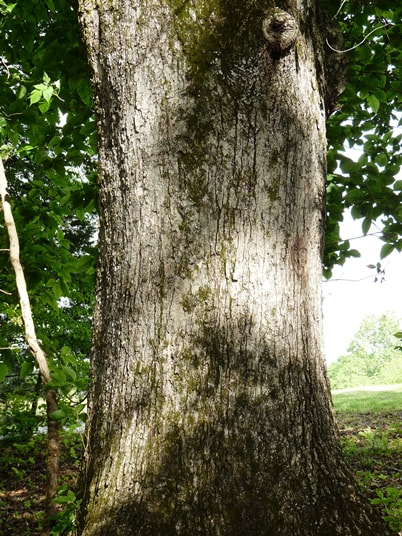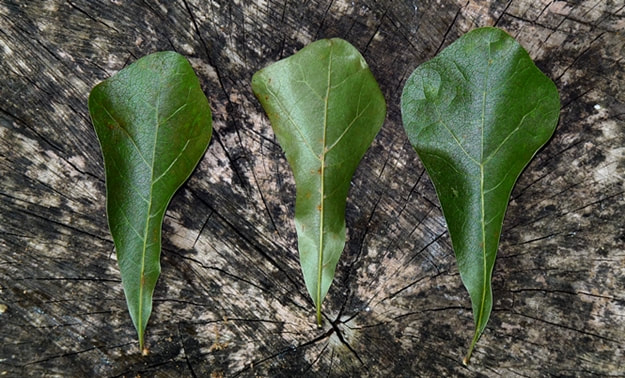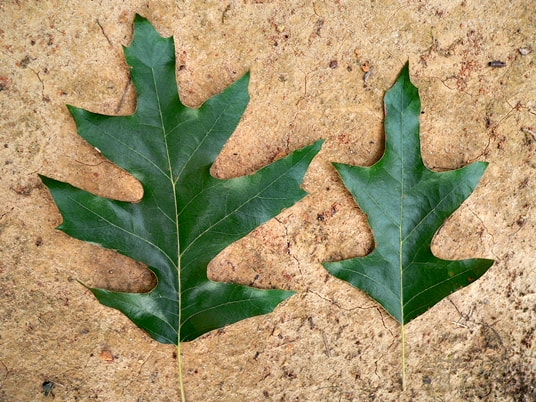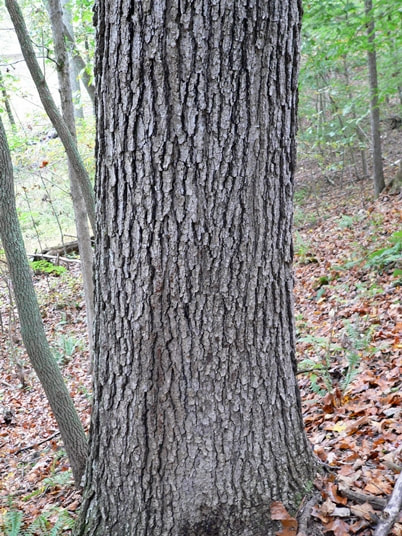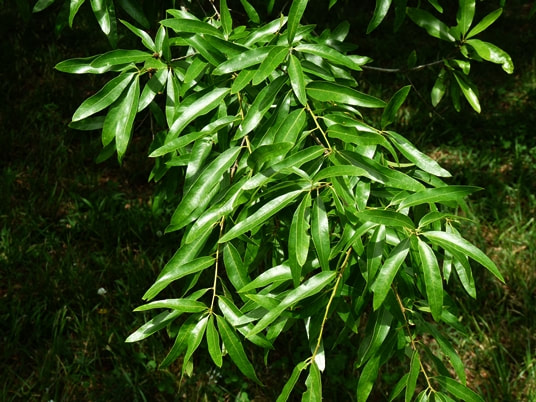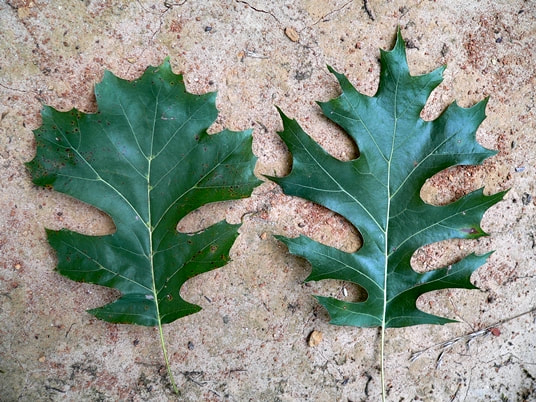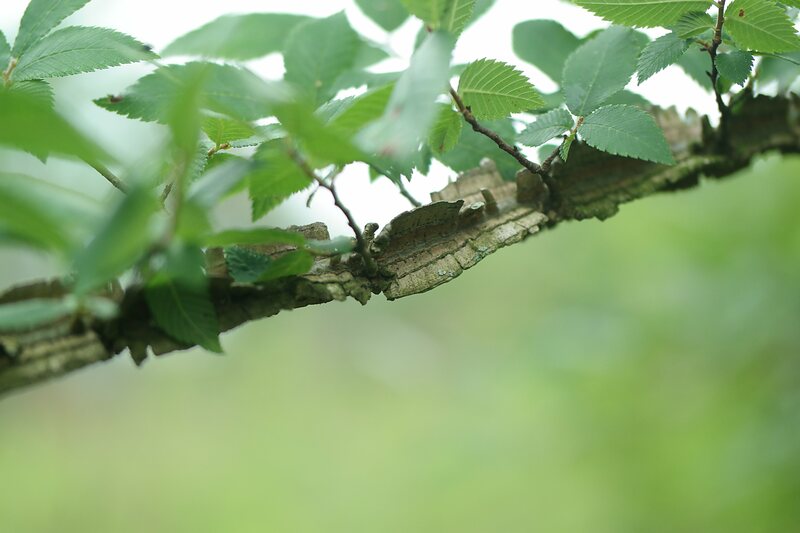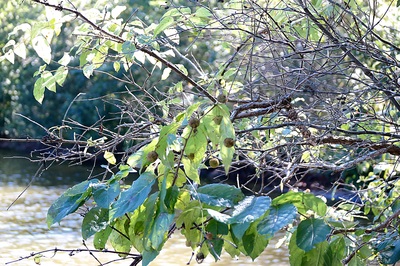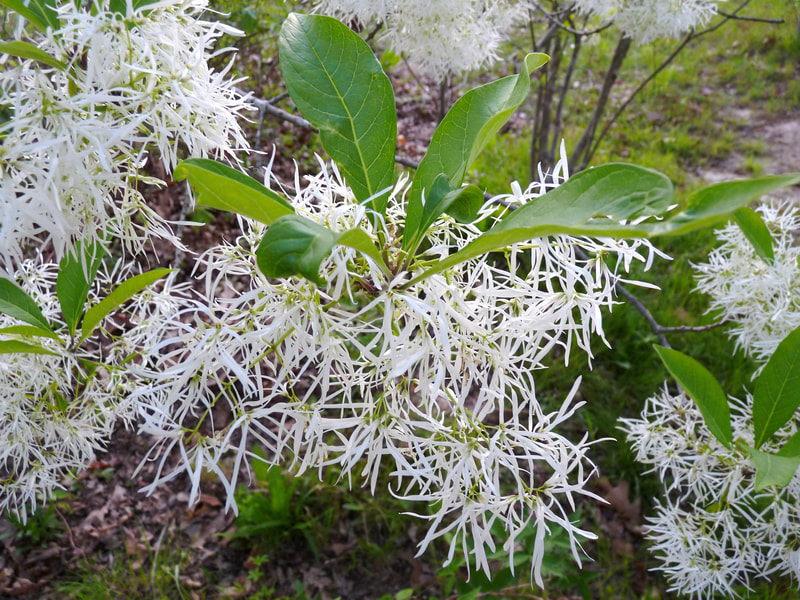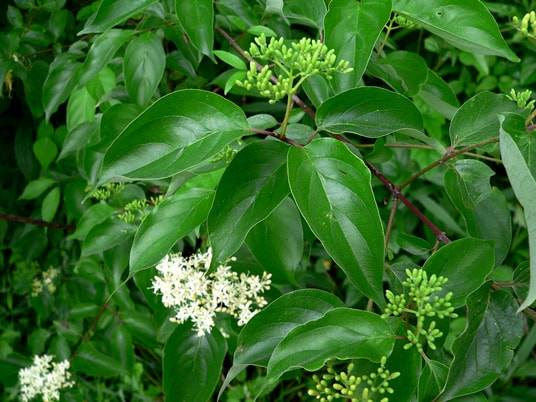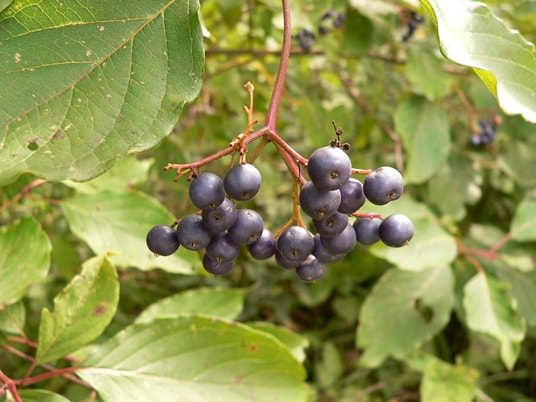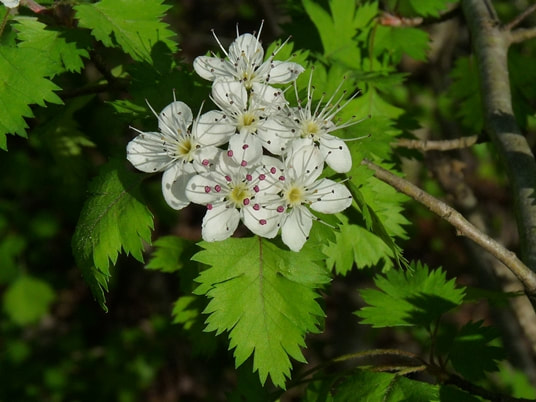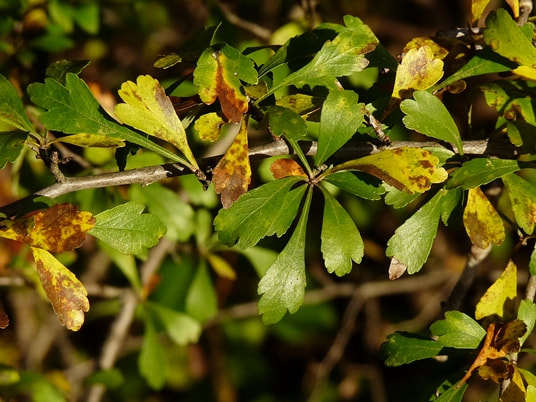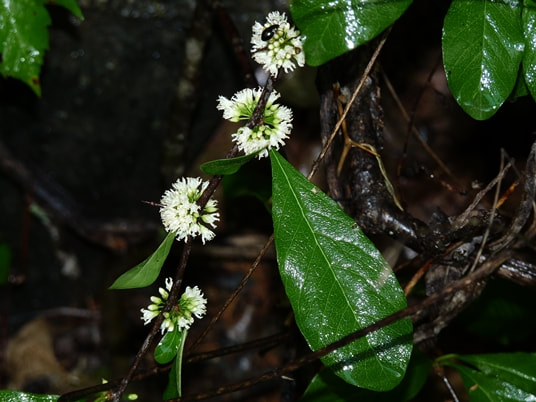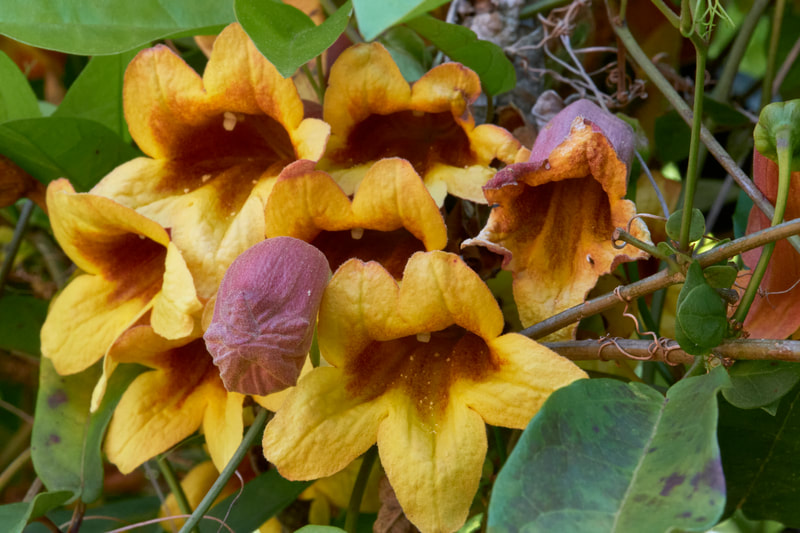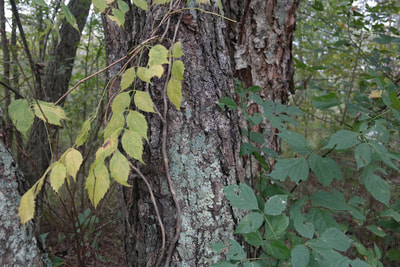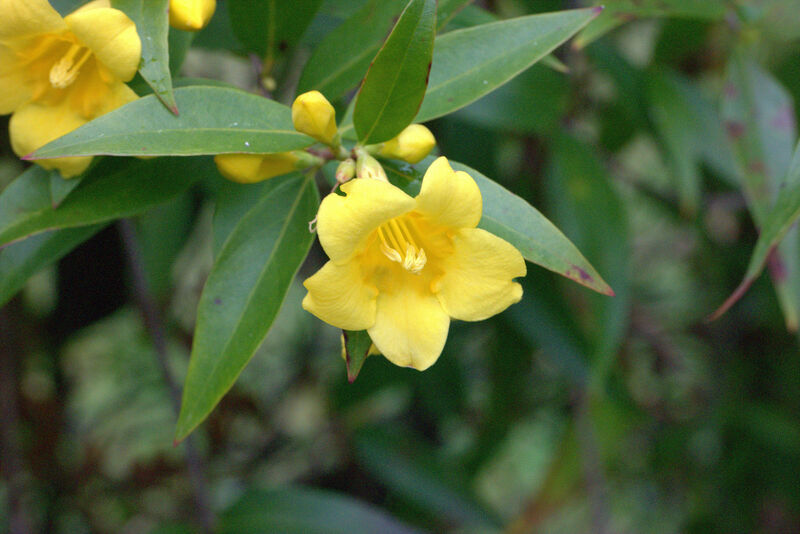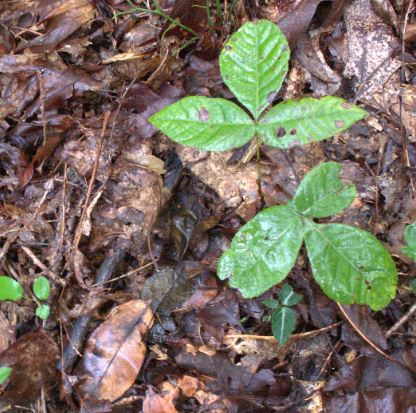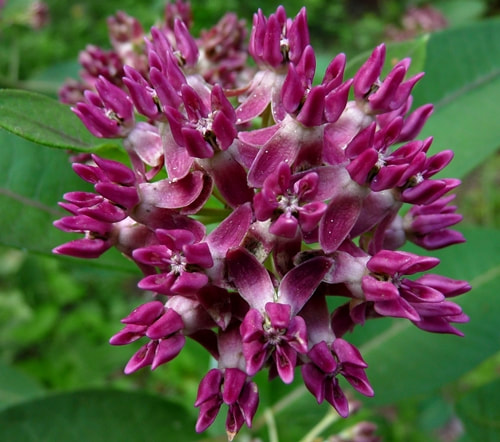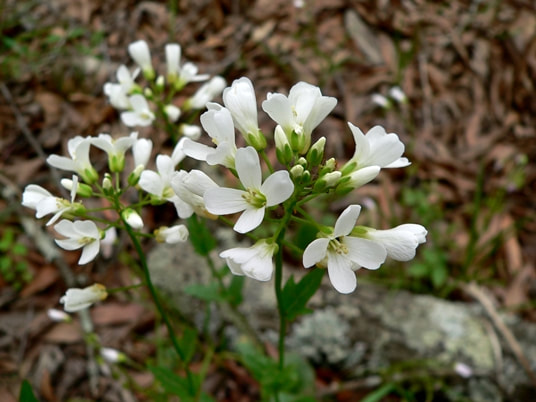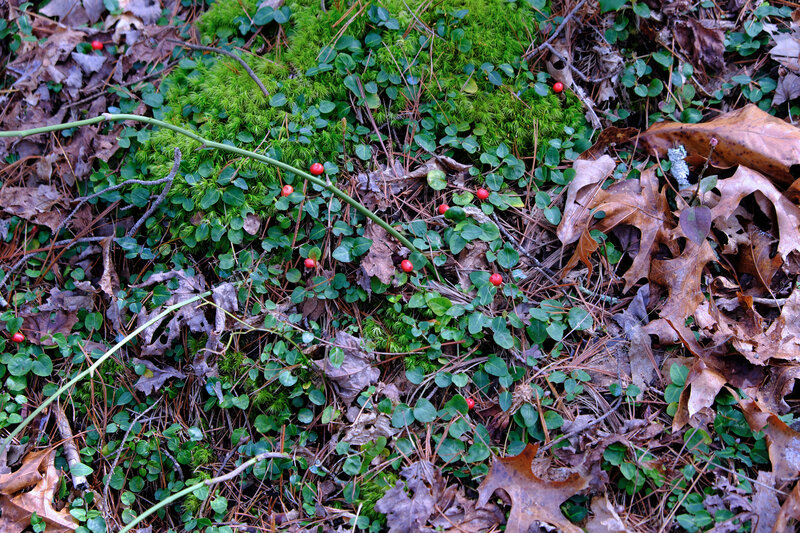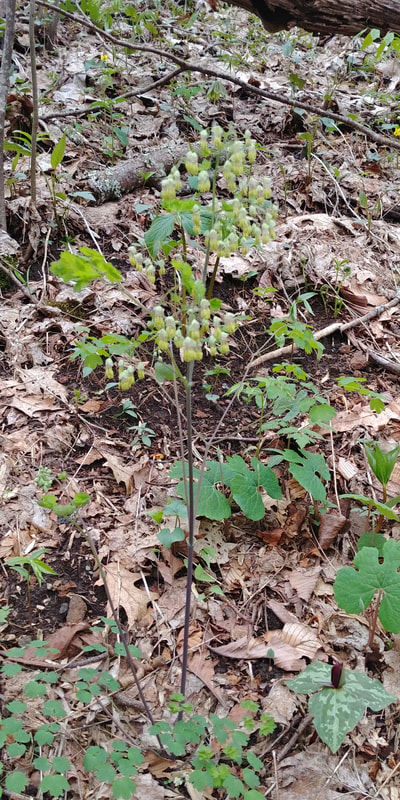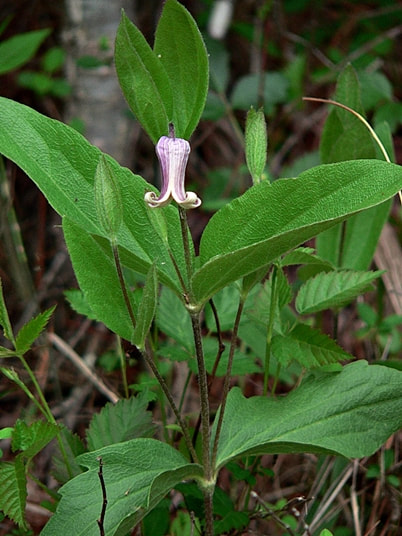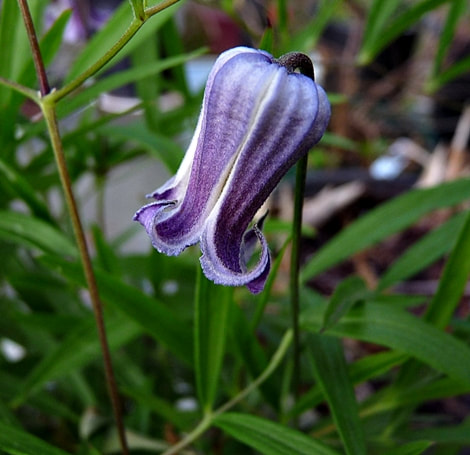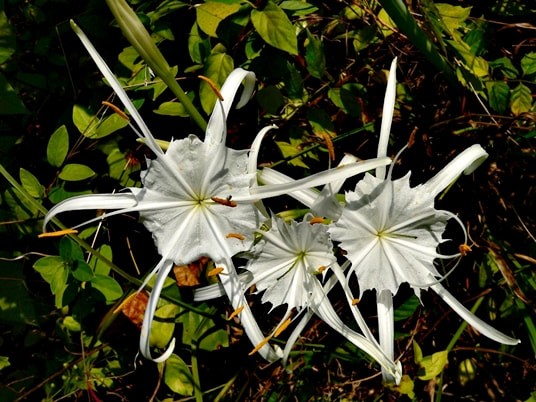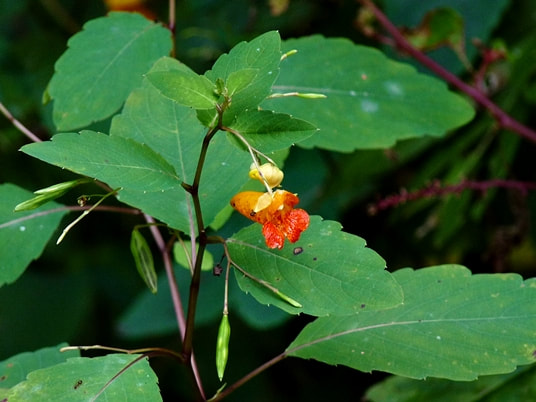Cumberland Plateau/Valley and Ridge Flatwoods
|
Flatwoods (or upland depression swamps) are forested wetlands that occur within a few miles of the Conasawuga, Coosawattee, Oostanaula and Coosa Rivers on calcium-rich gently rolling to flat terrain. In winter and spring, when rainfall is high, the soils swell to form an impermeable surface that ponds water. Mesic to hydric oaks usually dominate, and many calcium-loving species grow in the shrub and herb layers. In some of the wetter sites, buttressed trees impart a swamp-like, Coastal Plain feel. These habitats support many rare plants, including narrowly endemic species, species with prairie affiliations, and species that are disjunct from more northern and Midwestern regions.
|
|
Indicator species: Shumard oak, cherrybark oak, green ash, common shagbark hickory, Carolina hickory
What's special: the disjunct and narrowly endemic species found in this natural community makes it rare and special, as well as beautiful. In addition, temporary pools provide important breeding habitat for a diverse array of frogs and salamanders. These flatwoods also support the Conasauga blue burrower, a rare crayfish.
Related communities: Intergrades with Mesic Forests and Bottomland Forests; if deforested these sites could support wet calcareous prairies.
What's special: the disjunct and narrowly endemic species found in this natural community makes it rare and special, as well as beautiful. In addition, temporary pools provide important breeding habitat for a diverse array of frogs and salamanders. These flatwoods also support the Conasauga blue burrower, a rare crayfish.
Related communities: Intergrades with Mesic Forests and Bottomland Forests; if deforested these sites could support wet calcareous prairies.
|
Plants
Click on a plant name to see images. Plant lists in order of scientific name. Terms such as "rich", "calcareous" and "mafic" are from The Flora of the Southern and Mid-Atlantic States, here. Trees Southern sugar maple Acer floridanum Red maple Acer rubrum Musclewood Carpinus caroliniana Carolina shagbark hickory Carya carolinae-septentrionalis (mafic and shrink-swell soils) Pignut hickory Carya glabra Eastern redbud Cercis canadensis (esp. over calcareous or mafic) Sugarberry Celtis laevigata (bottomlands and upland calcareous) White ash Fraxinus americana (rich cove and dry calcareous) Green ash Fraxinus pennsylvanica Sweetgum Liquidambar styraciflua Black gum Nyssa biflora White oak Quercus alba Overcup oak Quercus lyrata Swamp chestnut oak Quercus michauxii Water oak Quercus nigra Cherrybark oak Quercus pagoda Willow oak Quercus phellos Shumard oak Quercus shumardii (moist, fertile and dry calcareous) Winged elm Ulmus alata American elm Ulmus americana (especially on nutrient-rich sites) Slippery elm Ulmus rubra (calcareous, rich) Shrubs Fringetree Chionanthus virginicus Silky dogwood Cornus amomum Southern swamp dogwood Cornus stricta Parsley haw Crataegus marshallii (mafic or calcareous) Littlehip hawthorn Crataegus spathulata (mafic or calcareous) Possumhaw Ilex decidua Buckthorn bumelia Sideroxylon lycioides (circumneutral soil) Southern wild raisin Viburnum nudum Vines American rattan Berchemia scandens Crossvine Bignonia capreolata Trumpet creeper Campsis radicans Carolina jessamine Gelsemium sempervirens Whiteleaf greenbrier Smilax glauca Common greenbrier Smilax rotundifolia Poison ivy Toxicodendron radicans Ground Layer Forbs Carolina windflower Anemone caroliniana Nodding onion Allium cernuum (areas of shale, mafic, ultramafic or calcareous rocks) Purple milkweed Asclepias purpurescens (perhaps mostly over mafic) Bulbous bittercress Cardamine bulbosa (primarily over circumneutral calcareous or mafic) Spring beauty Claytonia virginica Fremont's clematis Clematis fremontii (calcareous flatwoods and limestone glades) Alabama leatherflower Clematis socialis (calcareous flatwoods) Hammock spiderlily Hymenocallis occidentalis (gabbro and other calcareous upland flats) Orange jewelweed Impatiens capensis Michigan lily Lilium michiganese (calcareous hardwood flatwood) Partridgeberry Mitchella repens False garlic Nothoscordum bivalve May-apple Podophyllum peltatum Lizard's-tail Saururus cernuus Indian pink Spiegelia marilandica (usually circumneutral) Skunk meadowrue Thalictrum revolutrum Least trillium Trillium pusillum |
Representative Trees in order by scientific name
Representative Shrubs in order by scientific name.
Representative vines. in order by scientific name.
Representative wildflowers in order by scientific name,
|

